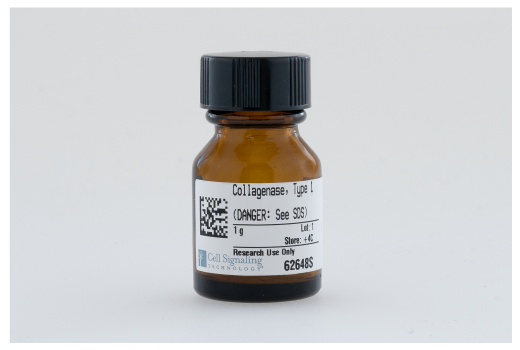 全部商品分类
全部商品分类
Collagenase, Type 1 is produced by the bacterium Clostridium histolyticum and dialyzed prior to lyophilization.


Collagenase, Type 1 is isolated from Clostridium histolyticum and has the original balance of collagenase, caseinase, clostripain, and tryptic activities. Crude collagenase preparations contain a mixture of several different enzymes, including collagenases and proteases, that effectively break down intercellular matrices. The ratio of collagenolytic and proteolytic activities is an important part of tissue dissociation. Crude collagenase is inhibited by metal chelating agents, such as cysteine, EDTA, or o-phenanthroline, but not DFP. Calcium ions provide structural stability for enzyme activity (1). Collagenases are used at various concentrations for tissue dissociation, generally ranging from 0.1 to 5 mg/ml, and various time points depending on the desired affect (2-4). Several types of collagenases (Types 1, 2, 3, and 4) have been established based on the enzymatic profile.
| Activity | Greater than or equal to 125 units per mg dry weightUnit Definition: One unit releases 1 μmol of L-leucine equivalents from collagen in 5 hours at 37ºC, pH 7.5. |

Product Usage Information
Collagenase, Type 1 is soluble from 1-20 mg/ml with an optimal pH range of 6.3-7.5. It is recommended to reconstitute with a buffer compatible with the intended assay. Vials should be brought to room temperature prior to opening and they should not be opened in humid areas.

Specificity/Sensitivity



Collagenase, Type 1 is supplied as a lyophilized powder. This product is stable for 12 months when stored at 4ºC, protected from moisture. It is recommended to reconstitute as needed and to store solutions at a 1 mg/ml concentration at -20ºC or -80ºC. Aliquot to avoid multiple freeze/thaw cycles.
参考图片








 用小程序,查商品更便捷
用小程序,查商品更便捷




